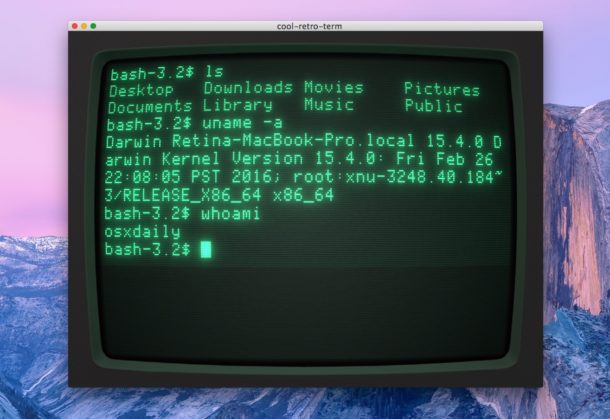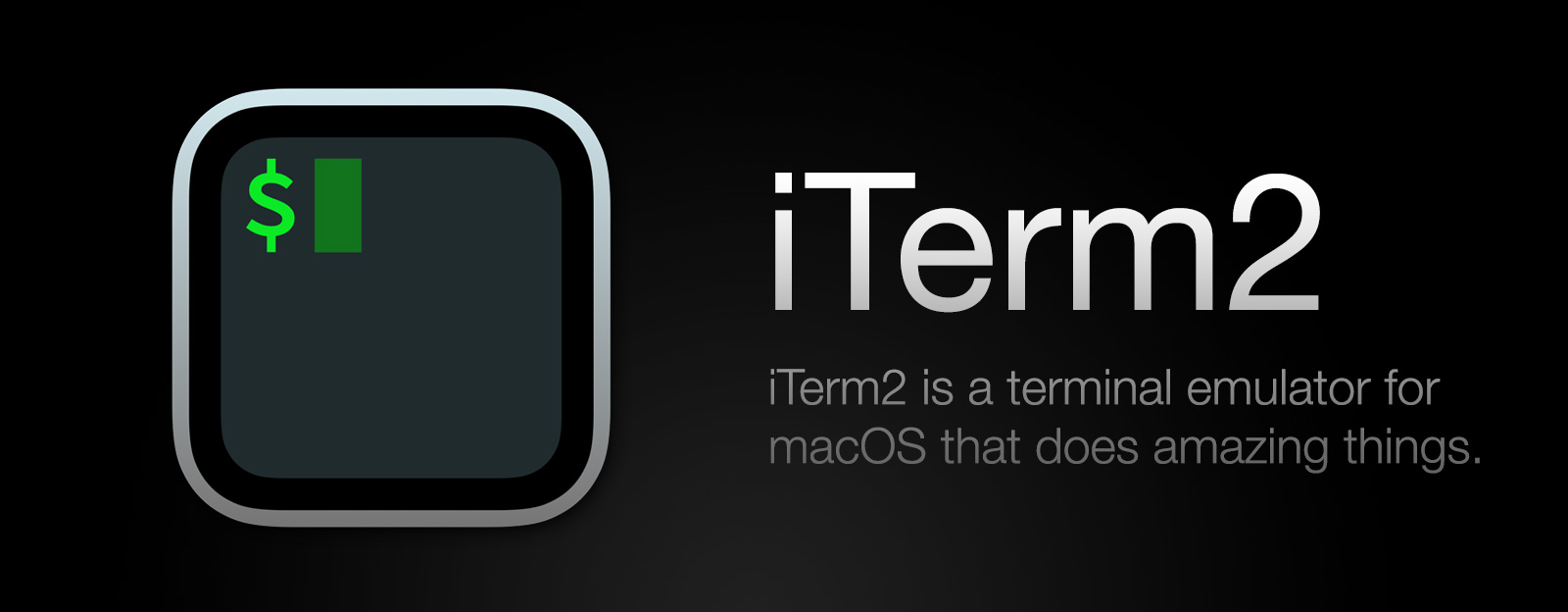- This file manager with Terminal emulator for Mac is fully compatible with MacOS 10.10 and later. Requires 45.83MB free space, Version 2.5.2 (3329). Released 25 Oct, 2020.
- Terminalpp (terminal) is a minimalist but powerful terminal emulator which provides the same features and user experience on both Windows and Linux. Free Open Source Mac Windows Linux Lightweight Terminal emulator Add a feature 0 Like.
- I've used the Windows version for years, and started using the Mac version recently. Although the Mac version isn't as fancy as the Windows version, it is full featured for everything I've ever needed in a multiple terminal emulator. It would be nice to have MobaXterm on Mac, but sadly it's only for Windows. By the way, SecureCRT is not free.
- Kitty Terminal can be easily considered among the best PuTTY alternatives for Mac OS as it’s a robust, multi-platform, and a GPU-supported terminal emulator. The program transfers description to the GPU and makes the OpenGL to work for quick, multi-platform performance.
MacWise is a minimalistic Mac OS Terminal emulator designed to work with a large number of different protocols, connection modes (serial / modem, telnet, secure shell, or even Kermit), and can emulate a wide range of terminals, including Prism, TV925, VT100, VT220, Viewpoint, Wyse 50, Wyse 60, Wyse 370. Besides that, the app allows logging into.
Mac OS 8 is now available as an app for macOS, Windows, and Linux, reports The Verge. Slack developer Felix Rieseberg has transformed Mac. This MAC emulator is also compatible with MAC OS 8.1. If you want to try Basilisk II, download the installer from its official website Basilisk.cebix.net. VMac is an open source MAC OS emulator for a number of Operating Systems such as Windows, Linux-Unix, NeXTSTEP, OS/2, DOS, etc. Although vMac has been abandoned, the Mini vMac is really.
(Updated Dec 11, 2018)
I recently got an urge to revisit old computer media from the late 90s and early 2000s. Growing up around that time, I remember reading a lot of MacAddict and MacWorld to learn what I could do with a Mac. Building websites, graphic design, hacking the appearance of the UI, all these were explained in the pages of magazines.
These magazines are freely available on the Internet Archive, including their cover discs. I was curious to see what applications were around back then — what about emulating Classic Mac OS to see?
Creative variations in UI design
My first instinct was to reach for VirtualBox, but that is a no go as I need to emulate a Motorola 68K or IBM PowerPC architecture. I recalled that QEMU could emulate other architectures, surely someone has already tried to emulate Mac OS 9.
Mac Os 9 Terminal Emulator Pc
Yes, many people have already written about emulating Mac OS 9, but only recently (2018) did experimental audio support come out for QEMU. Here is a short guide on how I got it running with MacOS High Sierra as the Host OS.
Note that while QEMU is available in Homebrew, it does not have the experimental audio support (yet).
Internet Archive
Magazines can be browsed right on the archive site, or downloaded as archives or PDFs (or a torrent containing all formats). Cover discs can be downloaded directly as ISO files or a torrent for the ISO. Don’t worry about seedless torrents; these ones are backed with web seeding.
Requirements
DevTools: I already have homebrew and XCode installed; because of this I was not prompted for missing command line tools. If you don’t have them, you might be prompted (by MacOS) to install them.
Hardware: I am not sure about hardware requirements, as most modern Macs will probably eclipse the power needed to run the guest OS. However if you have a low-power CPU (e.g. MacBook) then there may be some struggling.
Windows/Linux: These instructions should probably work there too, although you will probably have to substitute something else for coreaudio in the configuration step.
Get QEMU “Screamer” Fork
These instructions are adapted from Cat_7 from the Emaculation forums
I started by creating a directory for all this emulation stuff.
Next clone the fork of QEMU with experimental audio support:
Then configure the source to use MacOS CoreAudio. I have also enabled LibUSB, KVM, HyperVirtualization Framework, and the Cocoa UI. In this case I am only compiling the emulator for PPC (32-bit).
Next use make to compile QEMU. (If you have more processor cores, use make -j 4 or however many cores to speed up the process.)
Mac Os 9 Terminal Emulator Download

This will create a binary in qemu-screamer/ppc-softmmu/qemu-system-ppc that we can use.
Optionally you can install these binaries to /usr/local/bin or wherever. I kept them in the ~/emulation directory to separate them from the Homebrew QEMU binaries.
Create HD for Mac OS 9
We will need to have a hard drive image for our guest OS. I made mine 5 GB in size, which would be typical at the time for Mac OS 9.
In our qemu-screamer directory, we will use qemu-img to create the disk image.
Get a Mac OS 9 Installer
If you have an ISO of a Mac OS 9 install disc (a Mac OS X classic install disc will not work — it must be bootable), then you can use that in the next step. If you don’t have one, you can download one from Mac OS 9 Lives: Mac OS 9.2.2 Universal Install.
Install Mac OS 9
The Mac OS 9 Lives method won’t install quite like an original Mac OS 9 installer would, but instead will use Apple System Restore to restore an image onto the hard drive.
Start up QEMU with the following options:
A breakdown of that command:
-L qemu-screamer/pc-biossets the BIOS-cpu 'g4'emulate a G4 CPU-M mac99,via=pmuwill define the Mac model and enable USB support-m 512use 512 MB of RAM, could go lower probably-hda macos92.imguse our generated disk image for the hard drive-cdrom '~/Downloads/Mac OS 9.2.2 Universal Install.iso'use the ISO for the cdrom-boot dboot from the disk drive-g 1024x768x32default to 1024x768 resolution and 32 bit colour-device usb-kbdenable USB keyboard emulation/support-device usb-mouseenable USB mouse input, will improve cursor tracking somewhat
Once it starts up, you will be able to run Disk Initializer to format your hard drive image. Go ahead and do that, using Mac OS HFS Extended as the file system. One partition is good.
After initializing the disk, run Apple System Restore with the Mac OS 9 Lives disk image as the source and your disk as the destination. This will take a minute to restore. Once done, shut down the emulated system (Special Menu -> Shut Down).
Boot Mac OS 9
Similar to the last command, except we start up from the disk we created.
It should boot up and you will have a running Mac OS 9 with audio! I recommend saving this command as a shell script in your ~/emulation directory.
Boots much faster than it did in 2001
Tips
Backups: When the emulator is shut down, just make a copy of the hard disk image to create a backup. If something breaks your Mac OS 9 installation then you can restore the file.
Discs: You can dynamically attach CDs/DVDs to the emulated system by going to the menu bar on your host system for the QEMU application and selecting the option to attach to the CD IDE drive. It will open a dialog letting you select your ISO.

Compatibility: This is emulating Mac OS 9.2.2, released in late 2001. The emulated hardware is more or less of the same vintage, meaning software from the mid-to-late 90s will have some trouble running (as I found). The most common problem is not being able to drop down to 256 colours, although I later found a solution (link below). I have not tried emulating Mac OS 8/8.5; a cursory reading of forums has mentioned that doesn’t work yet.
Mac Os 9 Terminal Emulator Iso
Easter Egg in Finder
256 Colours
To support 256 colours you will need to add a bios driver. See the EMaculation forums for instructions; it involves replacing a file in the pc-bios directory with an older version that still supports 256 colours.
2018-12-11 Updates
I removed the extra arguments from configure as by default it will enable everything it can. make should use -j instead of -J. Using USB devices for mouse/keyboard improves mouse performance, but it still is a bit sluggish compared to the host machine. I found a way to get 256 colours working; see that section for a guide.
Terminal Emulation
MacWise emulates ADDS Viewpoint, Wyse 50, Wyse 60, Wyse 370, Televideo TV 925, DEC VT100, VT220 and Prism terminals. Supports ANSI and SCO ANSI color. Esprit III color is also supported in Wyse 370 mode.
MacWise allows a Macintosh to be used as a terminal – connected to a host computer directly, by modem, local area network or over the Internet with telnet or ssh secure shell. The emulators support video attributes such as dim, reverse, underline, 132-column modes, protected fields and graphic characters sent from the host computer, as well as enhanced Viewpoint mode. Features include phone list and dialer for modems, on-screen programmable function keys, connection scripts and more. Works with desktop Macs, MacBook and PowerBook.

Work from home
Connectivity
1. Built-in Modem
2. Telnet / TCP/IP
3. SSH Secure Shell
4. Kermit
5. Serial ports via USB to Serial adaptor
6. Also communicates directly with the Mac Unix Shell
Scroll Back
You can scroll back to the past 50 pages of data. MacWise remembers the last 50 pages that appear on your screen, regardless of whether the data has scrolled across the screen or the screen has cleared. Video attributes such as inverse and underline are also saved, including colors. This means that you can use the scroll bar to scroll back to previous screens to look at the data or print a scrolled-back page or copy a selection into the clipboard.
Adjustable from 4 to 50 pages
File Transfers
Kermit
Accuterm
ftp
text
Serial 2.0.7
Serial is a modern terminal emulator designed to make working with servers, network equipment, and embedded hardware easier for engineers and system administrators.
For system administrators, Serial supports the all-important break sequence required when working with routers and switches. Serial also includes a full-featured terminal emulator, allowing you to work with the screen-based menus found in network equipment and Unix programs including the text editors vi and emacs.
Makers and engineers will appreciate Serial's built-in support for embedded devices including the Arduino, Raspberry Pi, BeagleBone, and thousands of others. Serial includes several useful features for working with these devices including the ability to reset an Arduino, and the ability to connect to a BeagleBone over USB directly or through it's on-board serial header.

Finally, Serial supports several of the most common USB to serial adapters without requiring drivers, often saving you the hassle of finding and installing additional software.
What's New:
Version 2.0.7:- Bug fixes and improvements
- Initial Release!
- Added SSH Support
- Added Telnet Support
- Added Hex View
- Added Bluetooth Smart Support
- Dozens of Bug Fixes and Improvements
Screenshots:
Terminal Emulator Mac Os X Serial
- Title: Serial 2.0.7
- Developer: Decisive Tactics, Inc.
- Compatibility: OS X 10.11 or later, 64-bit processor
- Language: English
- Includes: K'ed by TNT
- Size: 20.46 MB
- visit official website